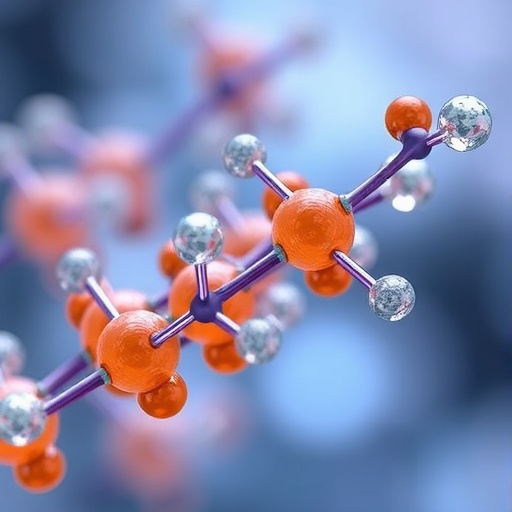Traditional low-temperature electrochemical CO₂ conversion systems, operating below 100°C, have struggled to maintain prolonged activity, typically faltering within 100 hours of continuous operation. Furthermore, these systems often exhibit energy efficiencies below 35%, severely limiting their potential for large-scale industrial integration. The inherently sluggish kinetics and poor stability of catalysts at these temperatures have directed scientific efforts towards the more challenging realm of high-temperature conversion processes. Operating at temperatures between 600 and 1,000°C can theoretically enhance reaction rates and product selectivity, but the catalysts capable of withstanding such conditions have often been precious metal-based, costly, and prone to rapid degradation.
Addressing these formidable challenges, a research team spearheaded by Professor Xile Hu at the École Polytechnique Fédérale de Lausanne (EPFL) has unveiled a groundbreaking catalyst design poised to redefine the landscape of high-temperature electrochemical CO₂ reduction. Their innovative approach harnesses the synergistic properties of a cobalt-nickel (Co-Ni) alloy, meticulously encapsulated within a Sm₂O₃-doped CeO₂ (samarium oxide-doped cerium dioxide, known as SDC) ceramic matrix. This unique configuration not only stabilizes the metal alloy against aggregation and sintering—common degradation pathways at elevated temperatures—but also enhances electron transfer efficiency and catalytic activity.
The encapsulation strategy is central to the catalyst’s outstanding resilience. At elevated temperatures, metal nanoparticles tend to migrate and coalesce, drastically diminishing active surface area and catalytic sites. By embedding the Co-Ni alloy nanoparticles within a robust SDC ceramic shell, the EPFL researchers engineered a nanoscale architecture that physically restrains particle movement while maintaining intimate contact with the electrolyte and reactants. SDC itself is renowned for its exceptional oxygen ion conductivity and thermal stability, properties that synergistically facilitate the activation and reduction of CO₂ molecules.
Crucially, the team employed a sol-gel synthetic route to fabricate the catalyst, a versatile chemical method involving the transition of metal salts and organic precursors into hybrid metal-oxide networks. This technique enabled precise control over particle size, composition, and distribution, culminating in uniform Co-Ni alloy clusters enveloped by the SDC shell. Systematic optimization revealed a balanced cobalt to nickel ratio yielded the most favorable catalytic properties, combining the robust electronic characteristics of cobalt with the earth abundance and stability of nickel.
Performance tests conducted at 800°C demonstrated the catalyst achieves an extraordinary 90% energy efficiency, signifying that a vast majority of the electric energy input is directly channeled into driving the reduction of CO₂ to carbon monoxide (CO), a vital chemical feedstock for numerous industrial applications including synthetic fuels and polymers. Remarkably, the catalyst exhibited 100% product selectivity towards CO, critically minimizing undesired side reactions such as hydrogen evolution or the formation of hydrocarbons, which often plague high-temperature electroreduction systems.
Preliminary techno-economic assessments commissioned by the EPFL team suggest that their high-temperature Co-Ni/SDC catalyst could potentially slash the overall costs of CO₂ electroreduction by 60% to 80% compared to existing technologies. These reductions stem from prolonged catalyst lifespan, reduced reliance on expensive precious metals, and markedly improved energy conversion efficiencies. This positions the technology as a compelling candidate for integration into various sectors where CO₂ emissions are abundant, such as steel manufacturing, cement production, and chemical synthesis.
Professor Hu’s team has already secured intellectual property protections by filing an international patent application for this innovative catalyst system, safeguarding both their technical innovations and paving the way for potential commercialization pathways. The collaborative research effort also drew expertise from the Institute of Chemical Research of Catalonia (ICIQ-CERCA), National Taiwan University, and the Technical University of Denmark, reflecting a broad international commitment to tackling climate change through technological innovation.
In conclusion, this encapsulated Co-Ni alloy catalyst represents a monumental stride in CO₂ electroreduction science, bridging the gap between laboratory breakthroughs and industrial reality. By overcoming the Achilles’ heels of catalyst degradation, energy inefficiency, and high costs, the technology lays the foundation for future carbon recycling infrastructures that could transform waste emissions into vital raw materials. As societies worldwide accelerate their transition to sustainable energy systems, innovations like this will be instrumental in meeting ambitious climate targets and forging a cleaner planet for generations to come.
Subject of Research: Electrochemical CO₂ Conversion Using High-Temperature Catalysts
Article Title: Encapsulated Co-Ni Alloy Boosts High-Temperature CO₂ Electroreduction
News Publication Date: 14-May-2025
Web References:
DOI: 10.1038/s41586-025-08978-0
References:
Ma, W., Morales-Vidal, J., Tian, J., Liu, M.-T., Jin, S., Ren, W., Taubmann, J., Chatzichristodoulou, C., Luterbacher, J., Chen, H. M., López, N., & Hu, X. (2025). Encapsulated Co-Ni alloy boosts high-temperature CO₂ electroreduction. Nature, published May 14, 2025. https://doi.org/10.1038/s41586-025-08978-0
Keywords
CO₂ electroreduction, high-temperature catalysis, cobalt-nickel alloy, cerium dioxide, samarium doping, carbon monoxide, catalyst longevity, energy efficiency, climate change mitigation, sol-gel synthesis, industrial sustainability, carbon recycling
Tags: carbon capture and utilizationcarbon neutrality initiativesclimate change mitigation strategiesCO2 conversion technologiesdurable catalysts for CO2 conversionefficient catalysts for industrial processeselectrochemical carbon dioxide reductionenergy-efficient chemical productionhigh-temperature catalysts for CO2innovative materials for carbon reductionrenewable energy advancementssustainable energy solutions





